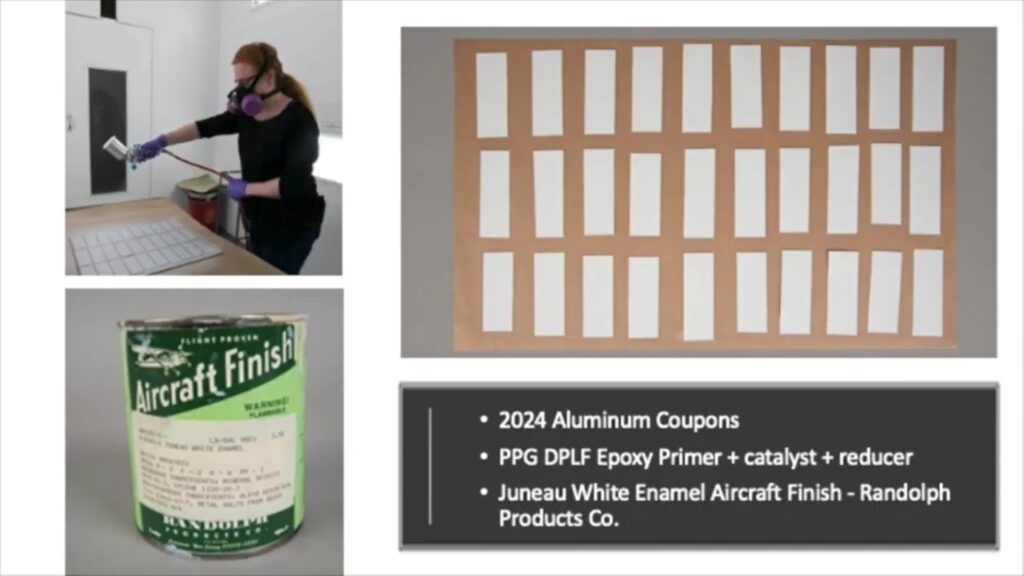Speaker: Kate Brugioni Gabrielli, Conservator, National Air and Space Museum
Summary by Emily Mercer, Graduate Fellow, SUNY Buffalo
On February 21st, 2023, the Washington Conservation Guild convened at The Kreeger Museum in Washington, D.C., for the annual Emerging Professionals Talks. The evening included a presentation by Kate Brugioni Gabrielli on her research conducted while she was an Engen Fellow at the National Air and Space Museum (NASM). Gabrielli’s presentation discussed her research on reducing disfiguring iron and organic stains found on objects in the NASM collection.

The first case study was a Korean-War-era ‘Bullpup A’ Surface-to-Air missile, which was brought into the lab for stabilization before display. The object had been stored in a ferrous crate which caused a banded stain pattern on the painted surface. The in-set stains were not reduced during initial triage treatment, which prompted this research and the search for a second large-scale object with a stained paint film. The second case study was the Orbital Workshop Skylab Backup Flight Unit with disfiguring brown staining on the epoxy finish from roof leaks and spills.
The first step in this research project was to create mockups that replicated the painted surface on the case study objects to test treatment options. Gabrielli cut thirty aluminum 2024 coupons, primed them with epoxy, and painted them with a historic alkyd formulation. The paint was analyzed and confirmed to have a composition similar to the film on the missile, a polyester-resin paint colored with titanium dioxide.
With the coupons made, the brown staining had to be recreated. After considering scale and consistency among the thirty coupons, Gabrielli formulated a solution using deionized water, hydrogen peroxide, acetic acid, table salt, and steel wool. The coupons sat in the solution for four months before they reached a degree of staining resembling the case study objects.
Instrumental analysis determined the presence of iron salts in the stains found in the paint films on the case study objects and test coupons. During her presentation, Gabrielli discussed how she determined the oxidation state of the iron found in the stains and reviewed the nature of chelators.
While selecting reagents to test, many factors were taken into consideration, such as cost, health and safety, and pH. Constants for the experimentation included molarity, application methods, and clearance methods, while variables included reagent type and pH. Ultimately, the most successful reagent was oxalic acid, at pH 4.0. Gabrielli noted oxalic acid did not disturb the surface gloss or etch the surface. Up to 5% oxalic acid delivered with cellulose powder or TechWipe® poultices was successfully used on the missile. The second-best reagent, 0.15M acetohydroxamic acid, at pH 9.2 in a cellulose power poultice, was used successfully in treating the epoxy finish on the Orbital Workshop Skylab Backup Flight Unit.
The reassembled and reintegrated Bullpup A Surface-to-Air missile will be on display at NASM’s National Mall Building when it is installed in its new gallery, Modern Military Aviation, and the Orbital Workshop Skylab Backup Flight Unit is currently protected-in-place during construction of the new Space Age gallery. Be sure to stop by to see these exciting objects on exhibition when their West End gallery spaces open at the end of NASM’s Transformation project!
A recording of this presentation is available on WCG’s YouTube Account.